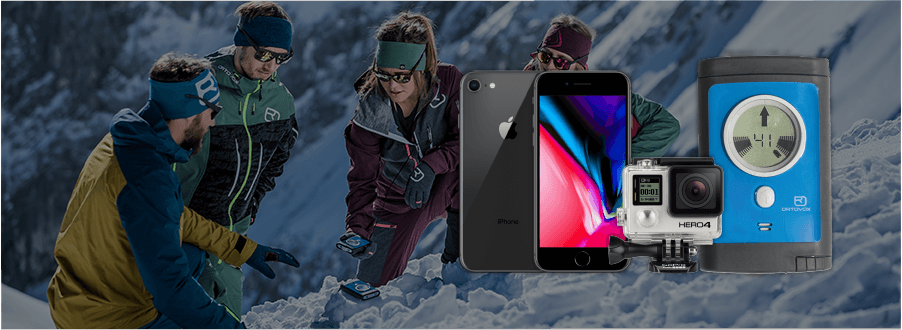 Online Since 2001
Online Since 2001
 Online Chat
Online Chat
 Order Before 1pm, DPD Next Day Delivery
Order Before 1pm, DPD Next Day Delivery
 Online Since 2001
Online Since 2001
 Online Chat
Online Chat
 Order Before 1pm, DPD Next Day Delivery
Order Before 1pm, DPD Next Day Delivery

Avalanche transceivers are among the most important safety feature within your fleet of avy gear, regardless of your skiing or boarding ability. Unfortunately, they are unable to save lives when the transmissions are interrupted.
Sadly, broken signals are one of the biggest downsides surrounding the increased use of electrical goods.
Avalanche transceiver technology is key for avalanche safety and searches for subjects using flux lines of a 457kHz transmitter and is designed to cover a scope of up to 60 meters through digital communications.
Rescuers are able to follow the flux path of the electromagnetic field to reach the buried device, which transmits a signal every second.
All devices are ETS 300718 certified to ensure that connections between the avalanche detector and the avalanche receiver remain consistent.
The process is known as SEND (from the buried device to the detectors) and SEARCH (for the buried device from the detector).
The signals transmitted from consumer electronics can make the relationship between avalanche receivers and detectors far less reliable.
Transmission signals going to and from the avalanche beacon, avalanche detector, and avalanche receiver can be influenced by a range of metallic objects as well as active and passive devices.
Commonly used items that can influence the transmission include
Meanwhile, carabineers and ice screws have been reported to cause negative impacts too.
Any electronic device will emit Electromagnetic Interferences [EMI], but those with GPS and other facilities that also send signals externally are the worst culprits.
When a device is in SEND mode, placing aluminum plates and alloy boards either on top or within a distance of 30cm can disrupt the strength of the signal, meaning that the transmission travels a far smaller distance, thus rendering it difficult to reach the beacons and detectors.
All of the devices mentioned above can cause an impact to some degree, although those that use GPS and similar features are worse.
For SEARCH mode, beacons become unable to find buried devices when the signal is interrupted by the Electromagnetic Interferences [EMI] products. As with the avalanche receivers, the beacons are influenced more heavily when the obstructing device is close by.
Once again, the devices that actively send signals will cause a bigger impact. Switching smartphones to airplane mode, for example, can help.
You must have your Gopro or phone around 50 cm away from you when searching with your transceiver.
When calling mountain rescue services your phone should be 25 cm away from your transceiver.
It’s important to stay safe and have the correct training when skiing or snowboarding off-piste please check out further blogs below :
If you would like to feature a blog about your organisation or experience in the snow please feel free to contact us on info@snowsafe.co.uk or 01273 003925. We are happy to take guest blogs linking back to your website.